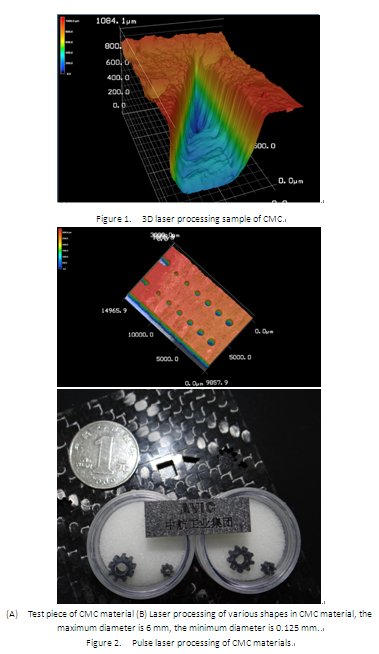The thrust-weight ratio of aeronautical and aircraft engine is closely related to the working temperature of hot end components. The engineering community committed to the long-term development of high temperature alloys to improve the working temperature. The core hot end components of the engine mainly include combustion chamber, turbine and afterburner, etc. The thrust-weight ratio of the next generation aircraft engine will be more than 12, which requires that the temperature of hot end components is close to 2000K. The updated designs involve the usage of ceramic matrix composites (CMC), single crystal blades and other new materials, as well as 3D irregular holes with advanced cooling structures. The CMC precision removal processing is the essential technology for its reliable application in aircraft engines. Therefore, how to improve the adhesion strength of the CMC and EBC by precision processing has become a research hotspot.
The Laser and Intelligent Energy field Manufacturing Group, led by Prof. Wenwu Zhang, has started working on the laser high-speed picosecond nanosecond precision manufacturing project since August 2012. Intensive study and numerous experiments on the short pulse laser processing of CMC are being undertaken.
As shown in Figure 1 and Figure 2, the group processed complex shapes in 3 mm thick CMC material with precision low damage surface profile by using nanosecond pulse laser high-speed scanning method. The laser processing includes but not limits to fatigue test piece, tensile test piece, drilling holes from 0.125mm to 10 mm in diameter, CMC material and resin base material, micro gears, triangular groove and 3D processing. Figure 1 showed that high resolution groove processing can be realized by using high-power nanosecond laser under appropriate pulse width and scanning speed. It’s observed that the surface and profile are neat and no micro crack is found based on laser confocal microscope observation.

Prof.Wenwu Zhang zhangwenwu@nimte.ac.cn
All Images by ![]()

